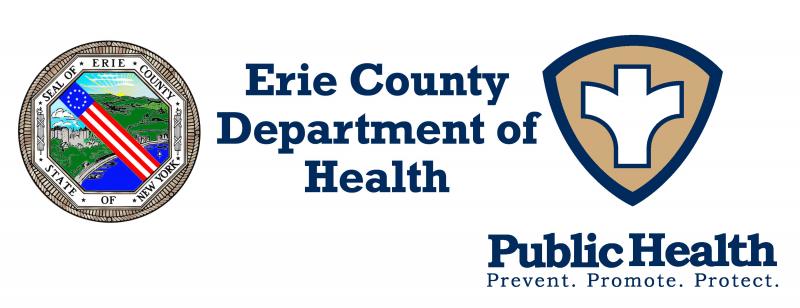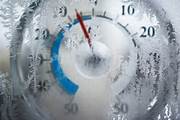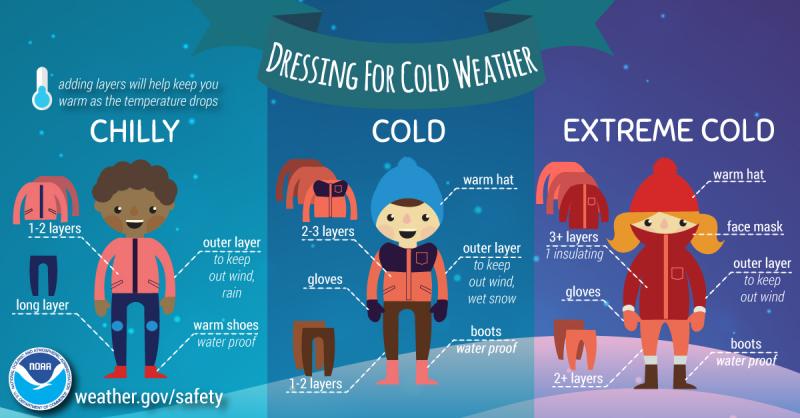Modified: January 4, 2018 3:59pm
Latest News

PRESS RELEASE
From the Office of the Commissioner of Health, Dr. Gale R. Burstein
Date: January 4, 2018
CONTACT: Mary C. St. Mary/Mary.StMary@Erie.Gov
Phone: 716.858.4941/ Mobile: 716.253.3925
Extreme Cold Weather Poses Health Risks for All Ages
Stay Indoors if You Can; When Outdoors Dress in Layers
ERIE COUNTY, NY-- The Erie County Department of Health (“ECDOH”) reminds everyone to take appropriate precautions during this weekend’s forecasted extremely cold temperatures.

“Already this winter we have experienced numerous stretches of very cold temperatures. However, the coldest temperatures and forecasted wind chills are expected over the next few days. When very low temperatures are combined with a significant wind, the resulting wind chill magnifies the dangerous effects to your body,” said Erie County Health Commissioner Dr. Gale Burstein. “Staying warm and safe is critical. Prolonged exposure to cold temperatures, whether indoors or outside, can cause serious and even life-threatening health problems. Infants and the elderly are particularly at risk, but individuals of any age can be affected. All residents must be aware of the weather conditions, prepare, and dress for them appropriately to prevent health problems related to exposure to these frigid conditions.”
The Erie County Department of Health’s website, www.erie.gov/health contains important tips and links for residents on how to prepare for cold weather and winter storms. Click here: Winter Storms & Extreme Cold to directly access this information.
Heat leaves your body more rapidly in severe cold, particularly as wind speed increases. If at all possible, try to stay indoors. Trips outside should be as brief as possible. Wear an outer layer of tightly woven clothing, preferably made out of wind resistant fabric, to reduce body-heat loss.

Inner layers of clothing consisting of wool, silk, or polypropylene will hold in more body heat than cotton. Try to stay dry as wet clothing chills the body rapidly. Excess perspiration will increase heat loss, so remove extra layers of clothing whenever you feel too warm.
Since children lose body heat more rapidly than adults, they need to be dressed warmly. Children may not clearly communicate their coldness to adults and should be closely monitored while outdoors in extreme cold. Take similar precautions with your pets and do not leave them outdoors or in an unheated vehicle for any length of time.
Shivering is an important first sign that the body is losing heat. Persistent shivering is a signal to return indoors as soon as possible. Uncontrollable shivering can be an indicator of hypothermia, when the body’s core temperature drops below normal. Other hypothermia symptoms include speech, memory lapses, frequent stumbling and drowsiness.
Frostbite is a severe reaction to cold exposure that can cause permanent damage. Symptoms of frostbite include numbness and a white or pale appearance in fingers, toes, ears and nose.
If frostbite and/or hypothermia are suspected, slowly warm the victim and seek immediate medical attention.
Cold weather also puts an extra strain on the heart. If you have heart disease or high blood pressure, follow your doctor’s advice about shoveling snow or performing any strenuous work in the cold. If you must perform heavy outdoor chores, dress warmly and work slowly. Take frequent breaks and be careful not to overdo it; your body is already working hard just to stay warm.
# # #
For more information
Erie County Department of Health Winter Storms & Extreme Cold
New York State Department of Health
Centers for Disease Control and Prevention -- Extreme Cold Guide

